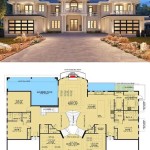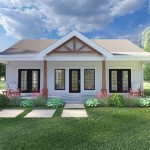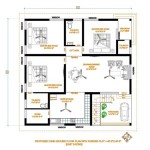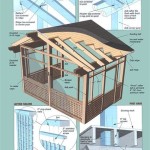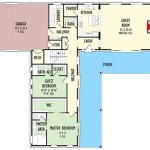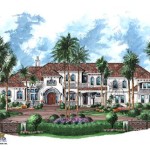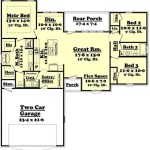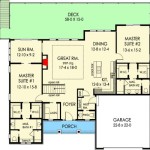Exploring 2 Bedroom Cabin with Loft Plans: Design, Functionality, and Considerations
The allure of a cabin retreat, a sanctuary away from the daily hustle, is a recurring dream for many. For those seeking a balance between compact living and functional space, the 2-bedroom cabin with loft plan emerges as a compelling option. This layout maximizes the available footprint, offering both private bedrooms and a versatile loft area that can serve a multitude of purposes. This article delves into the key aspects of these cabin plans, exploring their design possibilities, practical considerations, and the benefits they offer.
A 2-bedroom cabin, complemented by a loft, provides a comfortable amount of space for a small family, a couple who enjoy hosting guests, or individuals who simply desire room for hobbies and relaxation. The inclusion of a loft expands the usable square footage without significantly increasing the overall footprint of the structure. This design is particularly well-suited for locations with building restrictions or limited land availability.
Understanding the Core Components of the Plan
The foundation of any 2-bedroom cabin with loft plan lies in its careful allocation of space. The main level typically houses the central living areas, including a combined living room and kitchen, along with the two designated bedrooms and at least one bathroom. The placement of these elements is crucial for creating a functional and aesthetically pleasing living environment. Attention should be given to the flow between rooms, ensuring smooth transitions and maximizing natural light penetration.
The bedrooms are strategically positioned to offer privacy and separation from the main living areas. In many designs, one bedroom serves as a master suite, potentially including an en-suite bathroom or walk-in closet. The second bedroom can function as a guest room, a children's room, or a home office, depending on the needs of the occupants.
The loft area, accessed via a staircase or ladder, is a key differentiator in these cabin plans. This elevated space offers a flexible area that can be adapted to various functions. Common uses for the loft include a secondary living area, a home office, a guest sleeping space, a playroom, or simply a storage area. The design of the loft must consider accessibility, headroom, and safety features, such as railings and appropriate lighting.
The kitchen and living room often share an open-concept layout, fostering a sense of spaciousness and encouraging social interaction. The kitchen's design should prioritize functionality and efficiency, incorporating ample counter space, storage solutions, and modern appliances. The living room area should be comfortable and inviting, providing a focal point for relaxation and entertainment.
Bathroom design is another crucial consideration. Optimizing space and incorporating practical features, such as a shower-tub combination or efficient storage, is essential. The placement of the bathroom should be convenient for all occupants, ideally situated near the bedrooms and living areas.
Exploring Design Styles and Architectural Considerations
2-bedroom cabin with loft plans are adaptable to a wide range of architectural styles, allowing homeowners to personalize their cabin to reflect their individual tastes and preferences. Common styles include rustic, modern, Scandinavian, and traditional.
Rustic cabin designs often incorporate natural materials, such as wood and stone, to create a warm and inviting atmosphere. Exposed beams, wood paneling, and a stone fireplace are common features in rustic cabins. These designs aim to blend seamlessly with the natural environment, creating a sense of connection with the outdoors.
Modern cabin designs, on the other hand, embrace clean lines, minimalist aesthetics, and a focus on functionality. Large windows are often incorporated to maximize natural light and provide stunning views. Modern cabins may feature metal accents, concrete floors, and open floor plans, creating a contemporary living space.
Scandinavian cabin designs prioritize simplicity, functionality, and a connection with nature. Light-colored wood, minimalist furniture, and an abundance of natural light are hallmarks of this style. Scandinavian cabins often incorporate elements of hygge, creating a cozy and comfortable atmosphere.
Traditional cabin designs draw inspiration from classic architectural styles, incorporating features such as gabled roofs, dormer windows, and covered porches. These cabins often feature a more formal layout, with defined spaces for living, dining, and sleeping.
Architectural considerations extend beyond aesthetics to encompass structural integrity, energy efficiency, and adherence to building codes. Proper insulation, ventilation, and window placement are crucial for creating a comfortable and energy-efficient cabin. The design must also comply with local building codes and regulations, ensuring the safety and longevity of the structure.
Exterior design elements, such as siding materials, roofing materials, and landscaping, play a significant role in the overall aesthetic appeal of the cabin. Choosing materials that complement the surrounding environment and require minimal maintenance is essential. The landscaping should enhance the natural beauty of the site, creating a welcoming and inviting exterior space.
Maximizing Functionality and Adaptability
The success of a 2-bedroom cabin with loft plan hinges on its ability to maximize functionality and adaptability. The design should incorporate features that enhance the living experience and cater to the specific needs of the occupants. Smart storage solutions, multi-functional spaces, and adaptable layouts are key to achieving this goal.
Storage is often a premium in smaller cabins. Integrating built-in storage solutions, such as shelving, cabinets, and drawers, can significantly increase the usable space. Utilizing vertical space by installing shelving units and loft storage compartments is an efficient way to maximize storage capacity.
Multi-functional spaces are particularly valuable in 2-bedroom cabins with lofts. The loft area, as previously mentioned, serves as a prime example of a multi-functional space. Similarly, a guest bedroom can double as a home office or a hobby room. Designing spaces that can adapt to different needs allows homeowners to optimize their living environment.
Adaptable layouts are designed to accommodate changing needs over time. For example, a loft area can be initially used as a playroom and later converted into a guest sleeping area. Incorporating flexible design elements, such as movable partitions or modular furniture, allows homeowners to reconfigure their space as needed.
Outdoor living spaces, such as decks, patios, and screened porches, can extend the living area of the cabin and provide opportunities for outdoor relaxation and entertainment. These spaces should be designed to seamlessly integrate with the natural environment, creating a harmonious transition between indoor and outdoor living. Proper shading and weather protection are essential for maximizing the usability of outdoor living spaces.
The integration of smart home technology can further enhance the functionality and convenience of a 2-bedroom cabin with loft. Smart thermostats, lighting systems, and security systems can improve energy efficiency, enhance security, and simplify daily tasks. Remote access and control features allow homeowners to manage their cabin from afar, providing added peace of mind.
Accessibility is an important consideration, particularly for individuals with mobility limitations. Incorporating universal design principles, such as wider doorways, grab bars, and ramps, can make the cabin more accessible and comfortable for all occupants. Even if accessibility is not an immediate concern, planning for future needs can ensure the long-term usability of the cabin.
Careful planning and thoughtful design are essential for creating a 2-bedroom cabin with loft that is both functional and aesthetically pleasing. By considering the core components of the plan, exploring different design styles, and maximizing functionality and adaptability, homeowners can create a cabin retreat that perfectly suits their needs and preferences. The design should reflect the individual lifestyle of the occupants and provide a comfortable and inviting space to escape from the everyday.

2 Bedroom Cabin Plans With Loft

2 Bed Cabin With Wraparound Deck And Upstairs Loft 1395 Sq Ft 62774dj Architectural Designs House Plans

Cabin House Plan With Loft 2 Bed 1 Bath 1122 Sq Ft 176 1003

2 Bedroom Cabin Plan With Covered Porch Little River

The Best 2 Bedroom Cabin Floor Plans For Space Efficiency
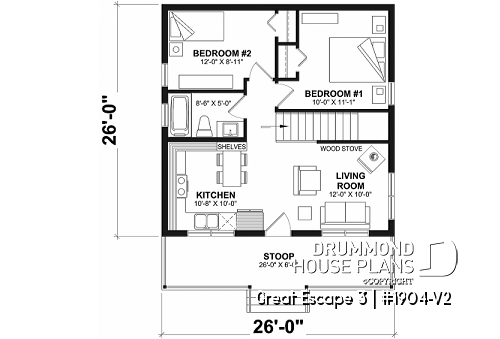
Unique Small 2 Bedroom House Plans Cabin Cottage

10 Awesome Cottage House Plans For 2024

Small Cabin House Plans With Loft And Porch For Fall Houseplans Blog Com

Two Level Floor Plans Log Cabin Cabins For Less

24 X 40 Cabin W Loft Plans Package Blueprints Material List

